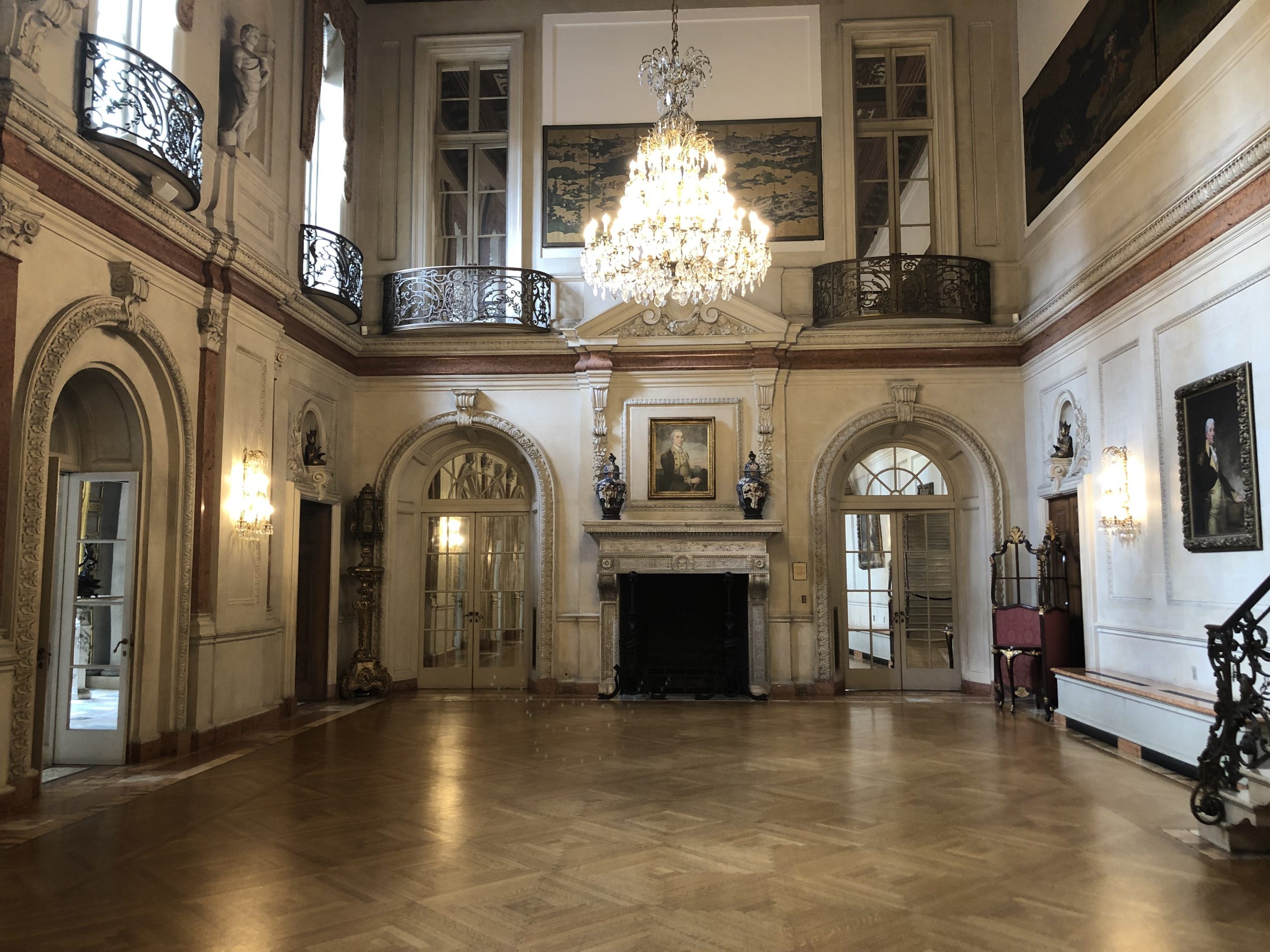WASHINGTON — Walk toward Anderson House on Massachusetts Avenue, just off DuPont Circle, and the first thing you see is a remarkable bronze of George Washington guarding her entryway.
Walk inside, and your breath will be nearly taken away by the opulent beauty and all the splendor of the gilded age.

This was once the winter home of American diplomat Larz Anderson; his wife Isabel donated their Beaux Arts mansion and much of its furnishings to the Society of the Cincinnatus in 1938 to serve as their headquarters.
Anderson was a member of the patriotic hereditary society formed in 1783 by Henry Knox and other officers who served in the Revolutionary War. Its purpose remains to perpetuate the memory of the War for Independence, remind citizens to remain vigilant in the defense of their liberties, and keep alive the memory of the virtuous sacrifices that had secured those liberties.
To be a member, you have to have descended from an officer who served in that war. Anderson was the great-grandson of Lt. Richard Clough Anderson Sr.
Despite the opulence of the grand hall, the elegant foyers, the Flemish tapestries, imported marble floors, French furniture, and Asian ivories, the image that stayed with me throughout the entire tour was the haunting portrait of Joseph Winters with the exhibition, America’s First Veterans.
The Winters portrait was done over forty years after the Revolutionary War when artist John Neagle stumbled upon an old man, near naked, huddled in the snow in a Philadelphia alley.
“I found him much benumbed with cold and scantily clad,” Neagle wrote in his diary. “His outer dress was ragged — His flannel and coat scarcely covered his naked body and he had an apology for a shirt — all were in rags and strings.”
Neagle brought the man home with home him, fed him, and finding he only spoke German, brought back the local grocer to help translate his story. He quickly found that Winter had immigrated from Germany, was a weaver by trade, and had outlived his wife and two children.
Then his story took a profound twist. The elderly homeless man had served in the Revolutionary War and told Neagle he “had fought very hard to establish the liberties of our country.”
Neagle wrote that Winter became “a lone wanderer in a world evincing but little feeling or sympathy for him.” Neagle would eventually paint his portrait, capturing all of the appalling sadness of how quickly society and government forget those who served when it becomes convenient.
Less than one-half of 1% of Americans currently serve in our armed forces, making them nearly invisible to most of us in our daily lives despite their call to serve all of us every waking hour of their lives.
Politicians sometimes use them to rally around or as a political wedge issue. Their service often takes more from them than any of us ever give, costing them marriages, friendships, life, limb, or mind.
They become the lone wanderers among us that we don’t see until tragedy strikes or someone publicly dismisses them. This isn’t something of yesteryear. It happened yesterday when Capitol Police asked National Guard troops to move out of the congressional buildings and into cramped garages.
The resulting situation gave them little access to bathroom facilities and created a scenario of cramped conditions that could be perilous during the COVID-19 pandemic.
While the reaction across Washington and both sides of the aisle was outrage — someone made that decision somewhere, someone with power found them disposable.
Let’s be clear here, these men and women in our National Guard are tough; they can and have handled worse than sleeping on a cold garage floor when it is 38 degrees out. The outrage here lies not in the deed but in the dismissal — the lack of respect for their fulfillment of duty.
It is a dismissive attitude many in our society have carried too long through too many generations.
Winters disappeared into the night after Neagle captured the old face fixed in sadness and fatigue. No record remains of where he spent his last days.
The elegant bronze of Washington has been removed from its graceful sentry outside the Anderson House — the receptionist confirmed it was a preventive measure in reaction to the riots and statue destruction that raged across the district last summer.
The ‘Lone Wanderer’ will still be on exhibition when Anderson House opens at the end of March. It is an extraordinary hall where dignitaries such as Winston Churchill and Ronald Reagan met with the decedents of those officers who led an often ragtag Army filled with brave men like Winters, who, despite not knowing the language nor living here very long, found liberty a cause worth defending.
It is worth a visit, just as a reminder of why we should never forget.

